The fashion industry is a worldwide business dedicated to the business of manufacturing and selling clothing. First of all, let us state that the best way to define fashion is simply the style or styles of clothing and accessories that are worn at any given time by groups of people.
When we talk about the fashion industry we are referring to the design, manufacture, distribution, marketing, retailing, advertising, and promotion of all types of clothing, from high fashion to everyday wear.
A bit of history
The fashion industry is a product of the modern era. And, here’s the story. Prior to the mid-19th century, virtually all clothing was made by hand for individuals, either as home production or by commission from dressmakers and tailors.
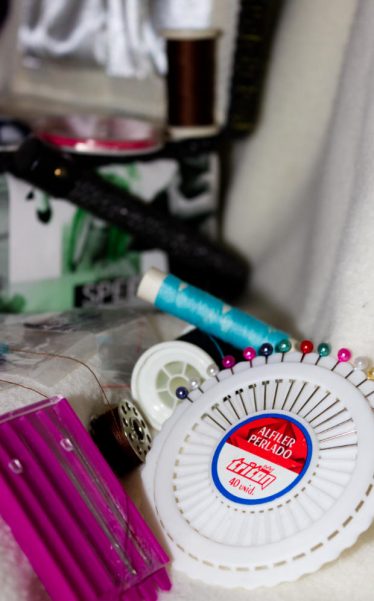
In the early 20th century, with the advent of new technologies such as the sewing machine, the rise of global capitalism and the development of the factory production system, and the proliferation of retail outlets such as department stores-clothing became mass-produced in standard sizes and sold at fixed prices.
Although the fashion industry first developed in Europe and America, today it is an international and highly globalized industry, with clothing often designed in one country, manufactured in another, and sold in a third.
For example, a U.S. fashion company may source fabrics in China and have the garments manufactured in Vietnam, finished in Italy, and shipped to a warehouse in the United States for distribution to international outlets.
The fashion industry has long been one of America’s largest employers and remains so in the 21st century.
Times changed and so did the fashion industry. The industry became more corporate and less creative.
“sustainable design is the only design that exists in the world”.- Angelica Salazar –
It grew to be a mass business and by the late 1990s, designers became huge brands with logos. Garments became more and more expensive. Designer clothes became luxury clothes.
And on the other side of the spectrum, high fashion continued to grow. What started as reasonably priced clothes, usually made in local factories, became a global business.
Some of the problems
Although the garment industry has positive sides, it also has negative ones.
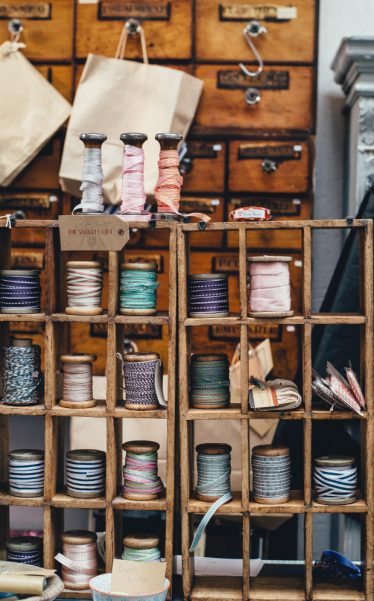
The work in textile garment workshops, satellites, and maquilas use production models that strip workers of all their rights.
Likewise, they are deprived of social protection and subjected to authoritarianism.
There are serious problems in terms of working hours. In these workshops, work such as the assembly of parts, embroidery, and washing of finished garments means that the maximum legal daily and weekly working hours are greatly exceeded.
This is a consequence of the fact that the eight legal working hours do not provide the necessary income, which may even be less than the minimum wage.
As if this were not enough, there is no payment for overtime, Sundays, holidays, night surcharges, or legal vacation time.
Greedy consumers
More and more companies discovered that they could make more clothes for less money if they were manufactured in India or China. What began as a democratization of fashion only began to go faster and faster. Clothes became so cheap that there was no point in making them because you could buy a dress for less than the cost of yards of fabric.
From the late 1990s, in the UK and other countries, we became a nation of greedy consumers. People bought them because they could make them because it was cheap and not because they needed them.
Consumerism in the fashion world is becoming a more than worrying phenomenon.
The fashion world, especially in the West, has changed dramatically in just a few years. What we see is only the tip of the iceberg of a problem of international magnitude and devastating consequences for a very important part of the population.
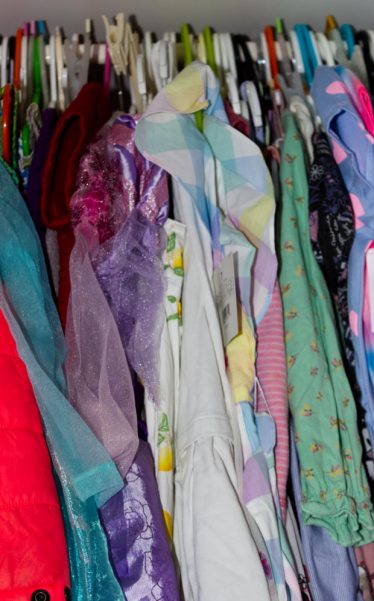
At first, it seemed that the fact that clothing was more affordable because prices were much lower, has become one of the most lethal economic strategies known to mankind today.
Seeing that prices went down, most of us thought it was a result of globalization. Obviously, most fashion companies ended up working in countries like China, Bangladesh, or Cambodia.
Places, where the cost of living is much lower than in the West, and therefore with a much lower cost of production as well.
Consumerism in the fashion world generated by big business has created slave countries.
Places where textile workers work endless days, in conditions more than painful and with all the laws of their country against them.
They receive miserable salaries that do not even allow them to cover their basic needs.
Fashion Revolution
The fashion revolution was born on a fateful April 24, 2013. When the eight-story block collapsed in Savar, a district of Dhaka, capital of Bangladesh.

The building produced garments for brands such as Benetton, The Children’s Place, DressBarn, Mango, Monsoon, Inditex, and Primark, as well as for retailers such as El Corte Inglés.
In that accident, 1,133 people died and 2,500 were injured, making the event the fourth largest industrial disaster in history.
We believe that 1,133 people are too many to lose on the planet in one building on one horrible day and not stand up and demand change.
Since then, people around the world have come together to use the power of fashion to change the world.
Fashion Revolution is a global movement of people who believe that positive change can happen if we all think differently about fashion and demand better. We want a cleaner, safer, fairer, more transparent, and more accountable fashion industry.
We want fashion to be a positive force. We believe in an industry that values people, the environment, creativity and that receives profits fairly.
Sustainability
In order to understand a little better what the fashion revolution wanted to achieve we had the opportunity to speak with Angelica Salazar who is the Colombian representative for this movement.
The first thing Salazar told us is that sustainability is more than ever in people’s minds and in their daily lives. And, for product designers, our commitment to the environment should be much greater. The principle of sustainability, i.e. meeting our needs without harming future needs, should always be at the forefront of our minds when designing.

She has been living in London for the last 14 years or so. In Colombia, she worked as a packaging designer. She came to the UK because she wanted to study for a master’s degree in international communication and strategy at London Metropolitan University and after finishing it she decided to stay.
She tries to use her skills and experience as an industrial designer to work as coordinator of the fashion revolution that comes out every April. This work she does with the help of volunteers who help in the activation of the bell who made my clothes.
Sustainable design is the philosophy of designing physical objects according to principles of economic, social, and ecological sustainability. It encompasses both the design of small objects of everyday use, as well as the design of buildings and in cities or land surfaces.
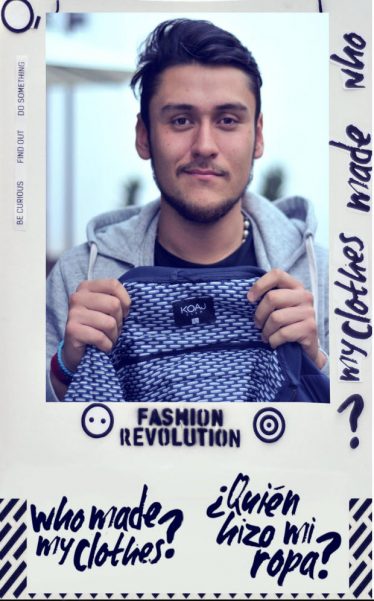
Laura Viera A.: How long have you been working on the sustainable design?
Angelica Salazar: As a Colombian here in England, let’s begin to appreciate much more all the craft techniques and all that is the cultural heritage of our country. always as a designer and woman, I have always been attracted to Colombian and world crafts. then, let’s begin to get involved with forums in which topics are discussed and a learning community is created that can be useful for students and entrepreneurs.
Laura Viera A.: What do you want to achieve?
Angelica Salazar: Basically my reality, as a Colombian in the United Kingdom has been a life experience as I have ventured to understand our existence. What I have tried to achieve is to have a satisfactory balance between my personal life and my professional life to be able to create a little bit of a world in which to enjoy a little bit.
I am a queer advocate for a systematic change in the way fashion is being produced and consumed and the narrative it manages.
What we need to change…
Fashion is now one of the most globalized industries. A single product can be replicated on several continents before it reaches the store. We need to consider how the industry works. We need to think about a new model.
We have a huge social and environmental impact. The production of clothes and the way we take care of them after we buy them takes up too much land, water, energy, chemicals and produces too much pollution.
If we want fashion to be seen as a force for good, we need to change the way we think about what we wear and why. We need to love our clothes even more.
The human side of fashion
Millions of people work in the fashion industry. We believe the industry can and should work better for all of them.
Forced labor, child labor, sexual harassment, discrimination, and dangerous working conditions need to be eliminated. These are just a few of the things that the people who make our clothes face every day.
Even though there are international standards and national laws that should protect people, human rights abuses are constant in the fashion industry. The Global Slavery Index estimates that 36 million people are living in some form of modern slavery; many of these people are making clothes for Western brands.
The legal minimum wage in most textile factory countries is rarely enough for workers to live on. For example, in Bangladesh, it is estimated that the minimum wage only covers 60% of the cost of living in a slum. Low wages put textile workers in a cycle of poverty and added pressure to work overtime, which impacts their health and safety, and also affects the quality of the garments.
On the other hand, making clothes consumes excessive amounts of water, energy, and other natural resources. We need to find new ways to make the clothes we love, without costing the earth.
Let’s tell a different story
Our clothes say a lot about us, but we don’t know much about our clothes.
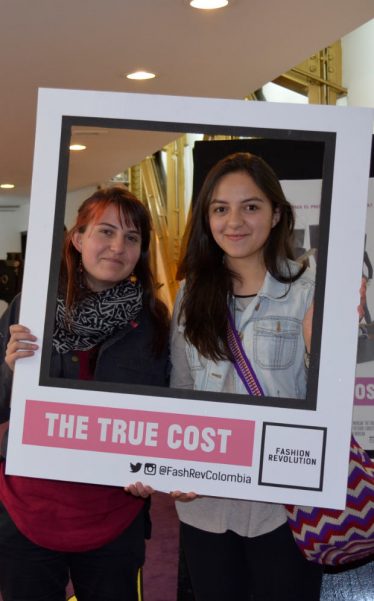
It takes a lot to make a garment. Not just the designers, the brands, the stores, but also the cotton farms, the ginners, spinners, weavers, dyers, seamstresses, and other factory workers who make the clothes we love.
But the people who make our clothes are hidden. We don’t know who makes our clothes. And they don’t know who buys the clothes they make.
By thinking about the people and stories behind our closet, we can tell a different fashion story. Fashion Revolution invites us to be curious about the background of our clothes. Fashion is the skin we choose. The clothes we wear represent how we feel about ourselves. It is our message to the world about who we are.


